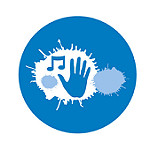
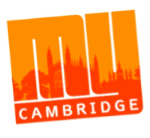 [Editor’s note: Guest post written by Michelle Lord, Arts Development Officer for Cambridge City Council]
[Editor’s note: Guest post written by Michelle Lord, Arts Development Officer for Cambridge City Council]
The Cambridgeshire Culture Card scheme is a project currently in its feasibility phase, and was initiated by My Cambridge, a Local Cultural Education Partnership where arts and cultural organisations, libraries, schools and youth service providers, local authorities, businesses and skills agencies work together to offer a consistent and high quality art and cultural education for all children and young people.
My Cambridge has a central proposition: by supporting children and young people to develop rich cultural lives, their life chances will be significantly improved, both in terms of education and employment, and their overall quality of life.
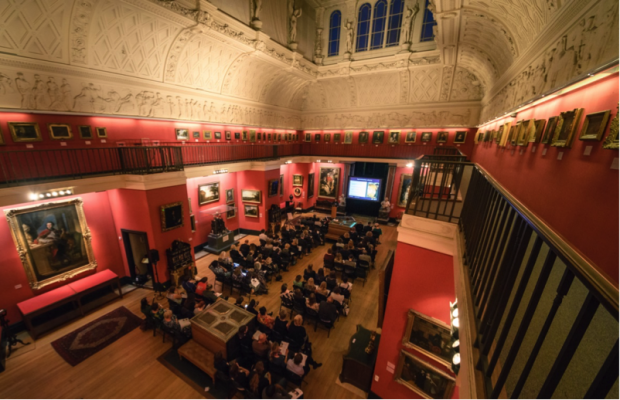
The opportunity
As acknowledged in the Libraries Deliver: Ambition national strategy, cultural and creative enrichment plays a fundamental and vital role in both the public library offer and the lives of the diverse communities they serve. In tandem, the Universal Culture Offer, formally launched in Hull on the 26 October, also recognises the immense reach of libraries as a public body; a national network of nearly 3,000 cultural hubs or gateways to participating in cultural activity [nb. 94% of libraries that responded to the SCL survey research offer some form of cultural activity].
Closer to home, Cambridgeshire Libraries is no exception, with not only a history of delivering arts and culture (for example, through its vibrant Arts Alive! programme), but also an exciting future with its recent successful bid to become one of the Arts Council England’s first library National Portfolio Organisations (NPO) from 2018-22. So the development of the Cambridgeshire Culture Card - a new and ambitious pilot project that seeks to promote the contribution of libraries to arts and culture, facilitate partnerships for delivering cultural opportunities, drive an evidence based model for more effective cultural strategy and planning, that puts libraries at the core of the wider Cambridgeshire cultural offer - could in many senses, be considered perfect timing.

What is the Cambridgeshire Culture Card scheme?
The Cambridgeshire Culture Card started as an idea formed during round table discussions at a large scale My Cambridge consultation event in 2015. The concept draws on both the Summer Reading Challenge in libraries, and also participants’ experience of the summer passport schemes run by the University of Cambridge Museums. The suggestion was that we explore how to update the library card into a more interactive tool, able to track, acknowledge and incentivise participation.
The library card (which could also be an app, barcode or smart card) provides a universally available unique identifier, and is free to the end user. A first conversation with Cambridgeshire Libraries opened the door to an initial scoping exercise of the technical challenges and costs of working with the library card. It quickly demonstrated that the project was technically and financially viable and could be achieved using existing technologies to record and track other cultural activities, for example, through a range of commercially available scanning or sensor based devices.
Over the following months, we continued to discuss the project with prospective partners and key stakeholders, building our knowledge of comparable schemes both in the private and public sector, talking to arts and cultural organisations about the benefits and challenges of such a scheme, and critically, exploring with other data owners how we can share and combine cultural engagement with other data to collectively demonstrate new insights and drive decision making. This process enabled us to identify three primary goals that the scheme would deliver using the library card as the primary delivery mechanism:
- increase children and young people’s engagement in arts, culture and libraries; particularly for those who face barriers to participation
- recognise and acknowledge children and young people’s engagement in art, creativity and culture
- provide robust, relevant and visible evidence of the impact of cultural engagement on children and young people
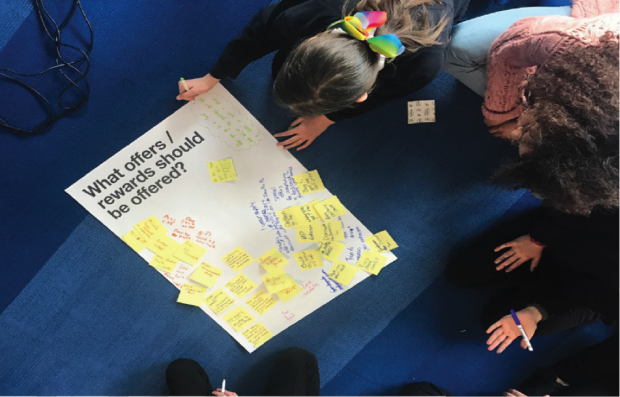
Feasibility phase
In January 2017, Cambridge City Council (a member of the My Cambridge steering group) was successfully awarded funding from Arts Council England to develop a feasibility study and options appraisal of the proposed scheme. This enabled us to commission a number of vital activities, including independent user consultation with a range of adult stakeholders, a series of creative consultation sessions with two cohorts of young people, and to work with a data architect to establish how we can link cultural engagement data to other locally held datasets.
Increasing engagement by children and young people
Who benefits from cultural engagement?
There is a growing body of evidence on the positive impact of cultural engagement on children and young people. However, there is also strong data that suggests an inequality of access to culture, particularly by groups that belong to low income families or who face other forms of disadvantage. The Social Mobility Index published in 2016 provided some sobering statistics for Cambridge and the surrounding county in relation to the life chances of young people growing up in the region. For example, Cambridge is the fifth worst (out of 324) performing local authority for young people doing well after leaving school. Fenland is the lowest ranking local authority area nationally for youth school mobility and the likelihood of achieving key educational benchmarks. The DCMS Taking Part and Child Taking Part Survey results also show that young people with low educational attainment are 43.8% less likely to engage in three or more cultural activities than someone with a level four qualification, and that those who live in areas of high deprivation are 15.4% less likely to engage in three or more arts activities than a young person that lives in an area of least deprivation [see Taking Part Survey data 2015/16 https://www.gov.uk/government/collections/sat--2; this data was available for the 16-19 age category only]
How can we increase engagement?
Our research has highlighted a number of methods that we can explore and implement to achieve increased take-up. At a very simple level, the card will encourage engagement by reflecting and acknowledging engagement, through points and rewards which can be real-world or virtual, using gamification techniques that young people are familiar with and find engaging. The commercial sector has been driving reward based schemes: consumers benefit from targeted offers and providers gain depth of knowledge about who, how, what and when. The physical health sector, commercial, public and community, has been rapidly catching up, with examples including Parkrun and Beat the Street, both of which have had remarkable success in driving regular engagement with physical activity, with the major incentive to the end user in both those schemes simply a reflection and acknowledgement of their engagement. What all these schemes have in common is that they use data to support far more effective strategy and planning.

What about engaging the difficult to engage?
By linking to data that can identify who belongs to a group more likely to face barriers to participation (such as children that have Free School Meal or Pupil Premium status), we can offer enhanced rewards and provide targeted communication that will make visible bespoke activities or interventions. This may sound simple, but currently cultural activity providers and services do not have a shared, data driven mechanism that ensures it is not just the ‘usual suspects’ that benefit from their provision. This opens up the opportunity for highly targeted incentives, enabling arts and cultural organisations to focus resources very clearly. It will open up the way to more effective strategy, planning and evaluation.
Recognising young people’s engagement in culture
Children and young people who participate in the scheme will have access to their own data through a user dashboard. We are working on ideas as to how this can be presented as a ‘creative CV’, completed in real time, which details not only the activities they have attended, or books they have read, but their level of engagement and the skills they have learnt. For example, we are in conversation with Trinity College London to look at how tracking and recording participation can provide evidence for an Arts Award qualification. This engagement data could also be used as part of an application to attend further or higher education, or be shown to a prospective employer or training agency.
Using evidence to support decision making: measuring the impact of cultural engagement
The scheme aims to link cultural engagement data collected by the card to other existing datasets, primarily owned by Cambridgeshire County Council. These include young people’s educational attainment and demographic data, library access data, and Smart City data on traffic and transport. Bringing datasets together will, for example, enable analysis of the impact of cultural engagement on educational attainment, with the ability to take into consideration a wide range of factors such as Pupil Premium and free school meal status.
The scale and operational nature of the data will mean that relationships that have been previously difficult to see, such as the different impacts of specific kinds of cultural engagement on educational attainment, will be much more visible. This will be correlation not causation, but will provide a much more effective base for in depth qualitative research. On its own, this will build a database of real time, anonymised and longitudinal cultural engagement data at a population scale: there are over 34,500 children and young people actively using their Cambridgeshire Library Card, and over 90,000 library members. This will provide a level of robustness to the findings which would be very expensive to achieve by other means.
For libraries, the Cambridgeshire Culture Card system will offer an easy and reliable way of tracking engagement beyond the borrowing the physical resources. For example, it could track attendance to events and participation in activities whether they are free or ticketed, and provide a more holistic view of how young people access and engage with their library. In addition, the data will be compatible with the Taking Part survey data, linking national and local statistics. A second tier of data is possible through the use of bespoke surveys issued and responses collated by the scheme, which would be used to collect data relating to soft outcomes, such as health and wellbeing.
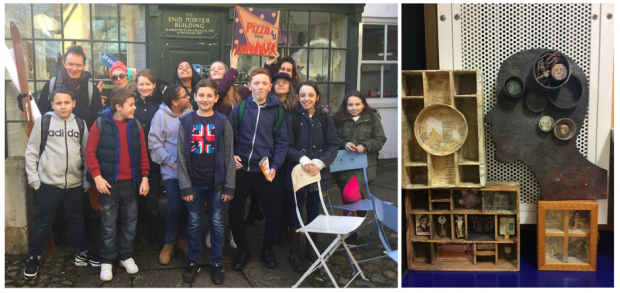
Where are we now?
The project is currently in its feasibility phase. When complete, if we are successful in drawing down sufficient funds, the project will then move into implementation with a projected launch date in mid-2020.
How can you get involved?
The Cambridgeshire Culture Card system will not be unique to Cambridgeshire: it will be designed to be highly replicable, using technologies and data assets already in place across the country. We would really like to hear from anyone in the public library sector that is either designing or delivering a similar project; is considering or would be interested in developing a scheme through the library service that can incentivise, track and measure impact of cultural engagement. In addition, if you are a library management system provider and this is of interest, please do get in touch.
For more information, please contact Michelle Lord, Arts Development Officer, Cambridge City Council by emailing michelle.lord@cambridge.gov.uk
--------------------------------------------------------------------
Please note, this is a guest blog. Views expressed here do not necessarily represent the views of DCMS or the Libraries Taskforce